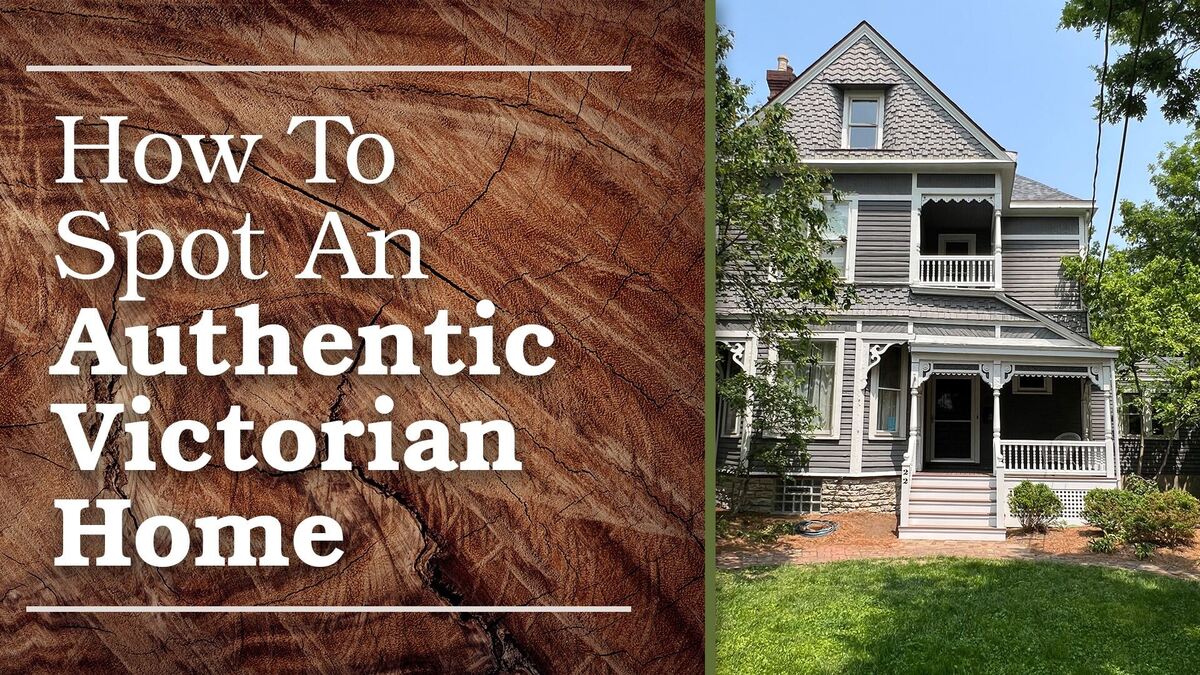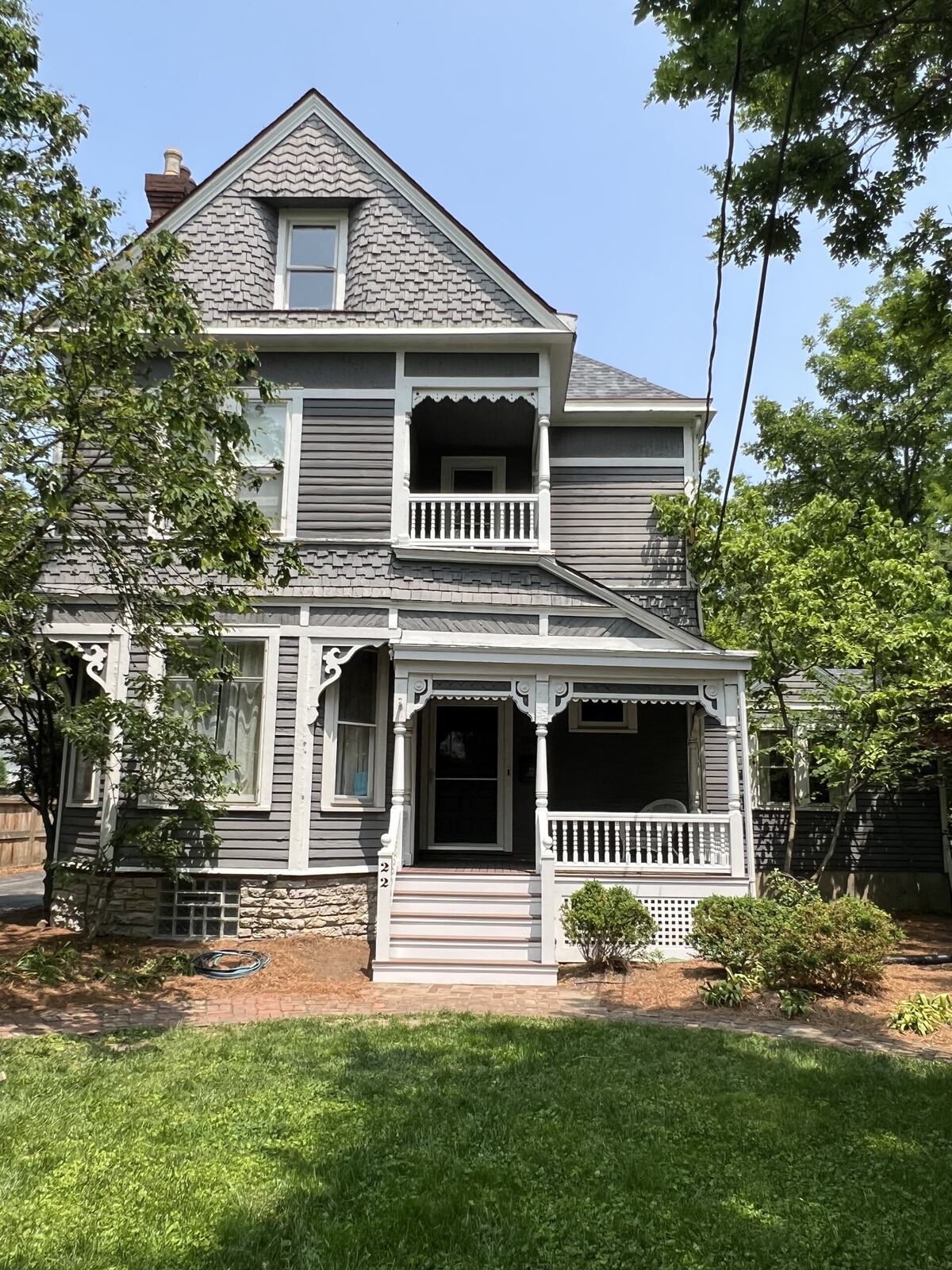How to Spot an Authentic Victorian Home

It's a sunny Sunday afternoon. You are driving down a road near your house, watching the houses whizz by one after another. No two are the same, and yet, many bear similar features like wide bay windows or jutting wood front porches. Each of these features tells us a story of when the house was built and what the architects valued as beautiful.
Learning how these features correspond to eras in which homes were built is extremely useful in determining different architectural styles. There are many different architectural eras with unique styles, and Victorian era homes are a prime example.
Victorian homes have stood the test of time in terms of popularity, and many homes built in this period still stand in near-original form to this day. Named because they were built during the reign of English monarch Queen Victoria, these homes are packed to the brim with style and craftsmanship.
In this post, I will tell you how you can identify authentic Victorian era homes based on their distinguishing features. Some features we will discuss are complex rooflines, ornate facades, porches and verandas, and more! Keep reading to learn more about one of my favorite topics, Victorian homes!

What are the Features of a Victorian Home?
Victorian homes, constructed between the 1840s and 1900s, are celebrated for their intricate designs and ornate details. Common features include steeply pitched roofs and asymmetrical facades, which add character and elegance. Porches adorned with decorative trim and spindles create inviting entrances, while bay windows offer a touch of grandeur.
The exterior often showcases a mix of materials, such as brick, wood, and stone, with vibrant colors that highlight architectural elements. Inside, Victorian homes typically boast high ceilings, elaborate moldings, and ornate fireplaces that serve as focal points. Parlor rooms, often filled with rich fabrics and dark woods, reflect the style's emphasis on comfort and aesthetics.
Another hallmark of Victorian architecture is the use of stained glass, which can add a splash of color and artistic flair to windows. The attention to detail and craftsmanship found in these homes continues to captivate enthusiasts today, making them a cherished symbol of a bygone era.
Let's discuss a few Victorian home hallmarks in more detail below.
Complex Rooflines (And Roofline Features)
Victorian homes are renowned for their intricate and steep rooflines, characterized by sharp, pointed gable roofs that add a dramatic flair. These roofs often feature decorative elements along the ridges and eaves, enhancing their visual appeal.
Dormer windows are another hallmark of Victorian architecture, allowing natural light to flood into upper rooms. These windows project from the roofline, typically adorned with their own small roofs, creating a charming silhouette against the sky.
Additionally, turrets and towers contribute to the homes' whimsical character. These round or polygonal structures extend upward, giving a castle-like appearance that elevates the overall design.
These unique features create a complex and fascinating roofline that is both functional and aesthetically striking, embodying the artistic spirit of the Victorian era.
Ornate and Asymmetrical Facades
The layout of Victorian homes is often irregular, featuring a mix of varying extensions, porches, and projections that create visual interest and complexity. This non-uniform design is further enhanced by the elaborate woodwork known as "gingerbread" trim, which adorns eaves, porches, and windows.
These decorative elements not only add charm but also emphasize the craftsmanship of the era. Overhangs and bay windows are common features, projecting outward from the main walls to create inviting spaces filled with light. These windows can be semi-circular or rectangular, adding to the home's asymmetrical nature and fostering a playful silhouette.
The combination of intricate detailing, irregular shapes, and dimensional features results in a captivating facade that embodies the spirit of Victorian architecture, merging functionality with artistic expression.
Decorative Features and Ornamentation
Victorian architecture is renowned for its extensive ornamentation, which adds a unique character to each structure. A prominent feature includes detailed cornices and eaves, where molded and decorated edges seamlessly connect the roof to the walls, enhancing visual interest. These ornamental elements often showcase intricate patterns and craftsmanship, emphasizing the beauty of the design.
Additionally, finials and spindles adorn the roofline and porch railings, offering a whimsical touch to the overall aesthetic. Often spiky and elaborately formed, these features create a sense of height and grandeur.
Brackets and corbels serve as not only practical supports but also as decorative embellishments under eaves, overhangs, and porches. Their sculptural quality adds depth and intricacy to the architecture while showcasing the builder’s skill.
Together, these decorative features exemplify the Victorian dedication to detail and elaborate design, making each structure a work of art that draws the eye and tells a story of its own.
Porches and Verandas
Victorian homes are celebrated for their expansive, decorated porches, which serve as inviting extensions of the living space. A signature feature is the wraparound porch, gracefully encircling one or more sides of the house, providing ample room for relaxation and social gatherings.
These porches are typically adorned with turned posts and spindles, showcasing delicately carved or lathe-turned columns and railings that enhance the elegance of the structure. The artistry reflected in these elements exemplifies the craftsmanship of the Victorian era and adds a touch of sophistication.
Fretwork, another hallmark of Victorian design, introduces intricate, lace-like woodwork to porch gables and railings. This decorative detail not only enhances the visual appeal but also demonstrates the era's attention to artistry and craftsmanship.
Tall, Narrow Windows
Tall, narrow windows are a hallmark of Victorian architecture, enhancing the elegance and grandeur of these homes. Often characterized by their distinctive shapes, these windows not only provide natural light but also contribute to the overall aesthetic appeal. Typically designed with a focus on verticality, the elongated structure draws the eye upward, accentuating the height of the home.
One prevalent style among tall, narrow windows is the sash window. These double-hung designs feature multiple small panes of glass, commonly arranged in classic patterns like two-over-two or four-over-four. Their intricate detailing and functional design harken back to the Victorian era's emphasis on craftsmanship.
Victorian Home Restoration with Old School Craftsman
Victorian homes are some of the best examples of creativity and craftsmanship available on the market today. These homes are time capsules to a past era, and this is made clear by the unique and often flashy design elements baked into their bones.
If you own a Victorian home and are looking for an expert craftsman to handle your repair or refurbishment needs, then Old School Craftsman is the choice for you. We are a father-son team of expert craftsmen who have years of experience in restoring Victorian homes, and we are here to help you.
Check out this Victorian porch restoration we did last year for an example of what Old School Craftsman can offer!
Click here to reach out to Brent at Old School Craftsman now!
Follow us on Facebook, Instagram, and Pinterest for more discussion on historical homes and updates from our most recent projects.
Happy with the difference Old School Craftsman made on your home refurbishment? Leave us a five-star review here!
